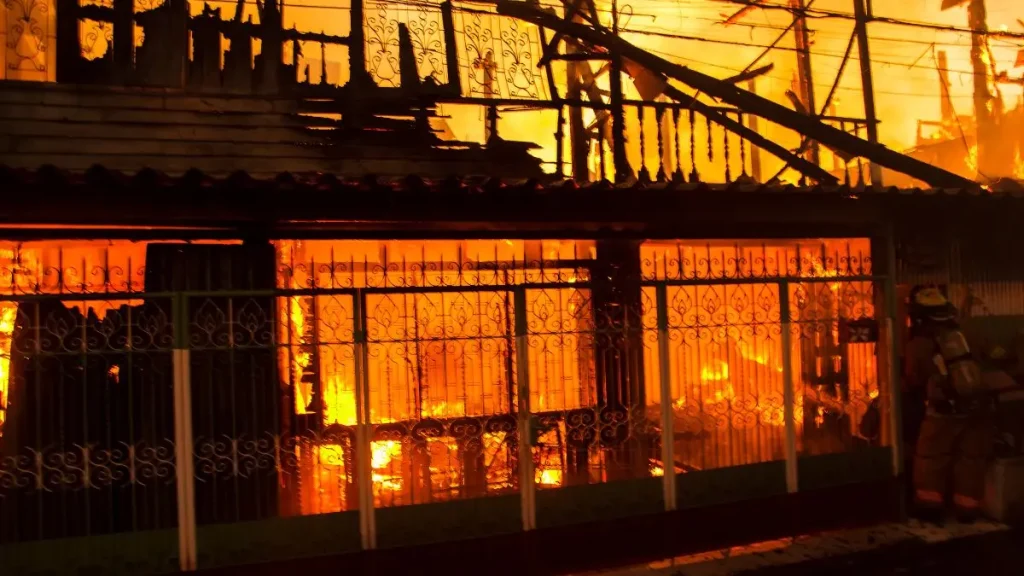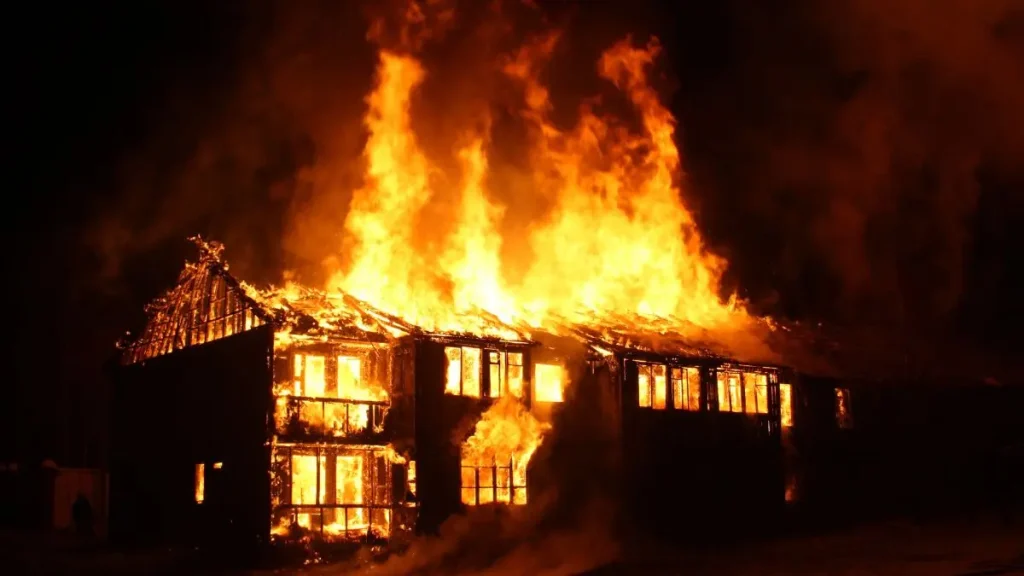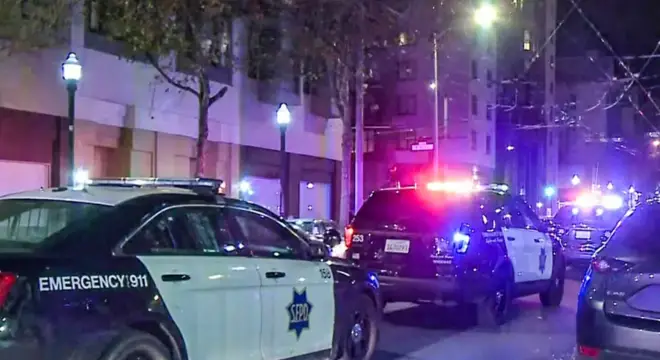Washington State Fire Kills Father and 9‑Year‑Old Daughter
It’s the kind of news that sits heavy on your chest.
Early Saturday morning, around 1:30 a.m. on July 5, a house in unincorporated Port Orchard caught fire. By the time emergency crews arrived, flames had already swallowed the home near SE Royal wood Place. Inside, a father and his 9-year-old daughter were trapped.
They didn’t make it out.
Their names were Carlin and Jayden Sheedy. A father and daughter, gone in minutes.
What makes this even harder to process is what followed. Firefighters faced serious problems with water supply—specifically, one of the hydrants near the home didn’t work properly. Crews had to scramble to bring in water tenders instead, which cost them precious time.
And while officials later said the water issue didn’t directly cause the deaths, it raises a real concern: what happens when your home’s on fire and the closest hydrant fails?
As someone who follows both local news and infrastructure issues closely, I can tell you—this isn’t just one tragic event. It’s a red flag.
It’s about whether rural parts of Washington are truly prepared for emergencies like this.
I’ll break down what happened, what we’re learning from the investigation, and most importantly—what this means for the rest of us who live in homes that might be just as vulnerable.
Have you checked how reliable the fire safety infrastructure is in your neighborhood? Or even run a fire escape plan with your family?
Let me know in the comments—I read every one.
What I Know About That Night – And What You Deserve to Know Too
I want to walk you through the moment everything changed for the Sheedy family.
It was around 1:30 a.m. on Saturday, July 5. While most of Port Orchard was asleep, a terrifying fire broke out in a house on SE Royal wood Place. One of the people inside—most likely in a panic—made a desperate 911 call. Deputies from the Kitsap County Sheriff’s Office, along with Central Kitsap Fire & Rescue, rushed to the scene.
But by the time they got there, the house was already fully engulfed in flames.
According to KOMO News, first responders knew instantly that this wasn’t going to be a standard rescue. Thick smoke, aggressive flames, and the early morning darkness made everything harder.
The tragic part? Despite the effort, two people inside couldn’t be saved: 40-year-old Carlin Sheedy and his 9-year-old daughter Jayden.
And just like that, two lives were gone before sunrise.
Just a few weeks earlier, a home fire in Cleveland displaced seven people—luckily, no lives were lost, but it shows how unpredictable these events can be.
How the Water Supply Failed Them – And What It Means for You?
If you’re thinking “weren’t the firefighters trained for this?”, let me tell you something that shook me—and should shake you too.
When crews arrived, they expected to tap into nearby hydrants, like they normally do. But this time, one of the hydrants didn’t work properly.
They had to bring in multiple water tenders—huge mobile tanks of water—to try and control the flames. And if you’re picturing that as quick or easy, it’s not. That process takes extra time. In fire emergencies, seconds matter, and this setup cost them minutes.
According to Kitsap Sun, Fire Marshal David Lynam confirmed it:
One of the hydrants they originally took didn’t operate correctly. The water supply really didn’t have an outcome on the people that were in the house at the time.
Still—don’t let that sentence numb you. Because here’s the reality: if this can happen once, it can happen again. And if your home depends on aging hydrants or unreliable water infrastructure, you could face the same risks.
Who They Were – And Why This Hurts Beyond the Headlines?

It’s easy to read names in an article and keep scrolling. But if you’re here, I want you to stop for just a moment and remember these names: Carlin Sheedy and Jayden Sheedy.
Carlin was just 40 years old. His daughter, only 9. They weren’t strangers—they were a family, like yours and mine.
Their loved ones have confirmed their identities and launched a GoFundMe page to help cover funeral expenses. It’s more than just financial support—it’s a way for people to show they’re standing with the family in this horrific time.
I can’t imagine the kind of pain their relatives are going through. Losing a child is unthinkable. Losing a child and a parent in one night? There are no words.
But what I do know is this: their story should not fade away like yesterday’s news. You and I—we owe them more than just sympathy. We owe them attention. Awareness. And change.
We recently covered another tragic loss when a 73-year-old Ohio man died in a similar early morning house fire, proving again how deadly these situations can be for anyone caught unaware.
What Authorities Are Still Trying to Figure Out?
If you’re wondering what exactly caused the fire, you’re not alone. I’m wondering too. And so are the professionals.
As of now, the cause of the fire is still under investigation. The Kitsap County Fire Marshal’s office and Sheriff’s detectives are working together to piece everything together. They’ll be looking into everything—from electrical faults to potential accelerants, if any.
What does this mean for you?
It means we’re still waiting for answers. And until then, it’s a good time to ask some tough questions about your own fire preparedness—because sadly, most people don’t think about this stuff until tragedy hits close to home.
Let’s not wait for a crisis to check how fire-safe our homes actually are.
And in Palmyra, a young child was hospitalized with severe burns after a house fire—reminding us why quick exits and safe environments are critical for children.
What You Can Do to Keep Your Family Safer Tonight?
I want you to walk away from this article with something more than sadness—I want you to have a plan.
So here’s what I recommend you do tonight:
- Test your smoke alarms. All of them. If one doesn’t beep, replace it.
- Run a family fire drill. Yes, even if your kids roll their eyes. It could save lives.
- Check your home’s escape routes. Is your back door blocked? Can your windows open quickly?
- Store a fire extinguisher where you can actually grab it. Under the sink is fine—just don’t bury it behind a mop.
- If you live in a rural area, ask your fire department about your water access. Don’t assume that hydrant near your home works.
Fire Marshal Kevin McCarty once said something that stuck with me:
It’s not just about calling 911. It’s about what happens in the first two minutes—when your choices decide everything.
He’s right. And the truth is, nobody expects to be the next headline. But neither did the Sheedy family.
How You Can Support the Sheedy Family?
I know many of us see tragedies like this and feel helpless. But the truth is—you can do something.
The Sheedy family has set up a GoFundMe page to help cover funeral expenses and begin healing. And from what I’ve seen, people are stepping up—neighbors, friends, even total strangers.
If you’re reading this and feel like contributing, even $5 can make a difference. Not just financially, but emotionally too. Because when you give, you’re telling the family: “You’re not alone.”
Aside from donating, you can also help by sharing their story. Post it on your socials. Talk about it in your community group. Awareness matters. It’s how real change starts—when we care enough to talk about it.
A lot of people have been sharing stories like these across local networks and real-time community updates. If you’re someone who likes staying in the loop on fire safety and neighborhood incidents, it’s worth keeping an eye on curated local alerts through WhatsApp communities. That kind of awareness can save lives—literally.
Why This Fire Exposes a Bigger Problem in Kitsap County?

Look—I’ve followed enough local disasters to know when something smells like a bigger issue. And this one does.
The hydrant that didn’t work? That’s not just a one-off technical glitch. It’s part of a larger problem that many rural parts of Kitsap County face: underfunded, unreliable firefighting infrastructure.
You might not know this, but some parts of unincorporated Washington still rely heavily on water tenders instead of modern pressurized hydrants. And that’s not okay in 2025.
Ask yourself this:
If a fire broke out on your block tonight, how confident are you that the nearest hydrant would work?
That question shouldn’t exist—but it does.
What we need now is for county officials to face this publicly. Hold emergency audits. Recheck hydrant functionality. Budget better for fire safety.
And honestly? You and I—residents, readers, voters—we need to demand that. Because next time, it could be your house. Or mine.
Tools and Habits That Could Save Your Family in a Fire
You’ve heard the story. You’ve felt the loss. Now let’s talk solutions.
Because here’s what I believe: tragedy should teach us something. And in this case, it’s about fireproofing your life before it’s too late.
Here are 6 things I recommend you do this week:
- Install interconnected smoke detectors – when one goes off, they all go off.
- Create a two-way exit plan for every bedroom—especially upstairs.
- Get a fire escape ladder if you live in a multi-story home.
- Buy a smart smoke detector that sends alerts to your phone (like Nest Protect).
- Do a nighttime fire drill—in the dark, with everyone pretending to be asleep.
- Register with your local fire department for a home safety inspection. Some areas offer them free.
I’m not sharing this because it’s trendy. I’m sharing it because I’ve seen what happens when people assume, “It won’t happen to me.”
But as we just saw—it can. It did.
If you’ve read this far, promise me one thing: take one step today. Just one.
Final Thoughts
I didn’t write this to scare you—I wrote it because I believe stories like this should change something. Carlin and Jayden Sheedy’s deaths aren’t just about flames and failure—they’re about the systems we trust, the safety we assume, and the action we delay.
If reading this made you pause, even for a second, then please—test your alarms tonight, walk your escape route, and talk to your family. Because prevention isn’t panic—it’s love.
If home safety matters to you, you might want to explore more real-life cases and preventive ideas in our Home Incidents section. Every article could help you prepare better.
Disclaimer: This article is based on currently available reports and statements from public officials. Details may change as the investigation develops. Always refer to your local authorities or fire department for the most accurate safety guidelines.


